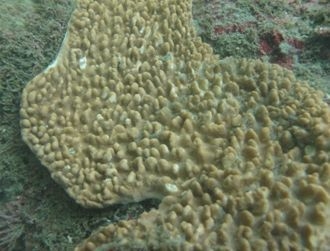A New Cubitane Diterpenoid from the Soft Coral Sinularia crassa
Abstract
:1. Introduction


2. Results and Discussion
| δH ( J in Hz) a | δC (mult.) b | δH ( J in Hz) c | δC (mult.) d | ||
|---|---|---|---|---|---|
| 1 | 2.04 m | 32.1 (CH) | 2.10 m | 32.3 (CH) | |
| 2 | 1.54 m; 1.16 m | 34.1 (CH2) | 1.42 m; 1.08 m | 34.9 (CH2) | |
| 3 | 1.49 m | 34.4 (CH2) | 1.53 m; 1.34 m | 35.2 (CH2) | |
| 4 | 4.02 brs | 75.3 (CH) | 3.78 dd (7.0, 5.5) | 75.2 (CH) | |
| 5 | 151.7 (C) | 152.9 (C) | |||
| 6 | 2.39 m; 2.01 m | 31.6 (CH2) | 2.27 m; 2.07 m | 32.5 (CH2) | |
| 7 | 2.31 m; 2.16 m | 27.3 (CH2) | 2.27 m; 2.00 m | 28.2 (CH2) | |
| 8 | 147.9 (C) | 148.0 (C) | |||
| 9 | 5.35 d (9.5) | 120.0 (CH) | 5.64 d (10.0) | 121.4 (CH) | |
| 10 | 4.03 d (9.5) | 61.7 (CH) | 4.00 d (10.0) | 62.3 (CH) | |
| 11 | 211.3 (C) | 209.6 (C) | |||
| 12 | 2.45 dd (13.5, 11.0); | 50.2 (CH2) | 2.27 m; | 50.7 (CH2) | |
| 2.26 dd (13.5, 2.5) | 2.17 dd (14.0, 2.5) | ||||
| 13 | 0.98 d (7.0) | 23.3 (CH3) | 0.78 d (7.0) | 23.8 (CH3) | |
| 14 | 5.03 s; 4.90 s | 111.8 (CH2) | 4.97 s; 4.81 s | 111.5 (CH2) | |
| 15 | 2.35 m | 33.0 (CH) | 2.24 m | 33.5 (CH) | |
| 16 | 1.07 d (7.0) | 21.3 (CH3) | 1.06 d (7.0) | 21.8 (CH3) | |
| 17 | 1.02 d (7.0) | 22.5 (CH3) | 0.95 d (7.0) | 23.1 (CH3) | |
| 18 | 142.9 (C) | 143.9 (C) | |||
| 19 | 1.72 s | 21.2 (CH3) | 1.66 s | 21.5 (CH3) | |
| 20 | 4.89 s; 4.79 s | 113.7 (CH2) | 4.85 s; 4.80 s | 114.0 (CH2) |


3. Experimental
3.1. General Procedures
3.2. Animal Material
3.3. Extraction and Separation
3.4. Cytotoxicity Testing
4. Conclusions
Acknowledgements
References
- Blunt, J.W.; Copp, B.R.; Keyzers, R.A.; Munro, M.H.G.; Prinsep, M.R. Marine natural products. Nat. Prod. Rep. 2012, 29, 144–222. [Google Scholar] [CrossRef]
- Su, J.-H.; Wen, Z.-H. Bioactive cembrane-based diterpenoids from the soft coral Sinularia triangula. Mar. Drugs 2011, 9, 944–951. [Google Scholar] [CrossRef]
- Cheng, S.-Y.; Huang, K.-J.; Wang, S.-K.; Wen, Z.-H.; Chen, P.-W.; Duh, C.-Y. Antiviral and anti-inflammatory metabolites from the soft coral Sinularia capillosa. J. Nat. Prod. 2010, 73, 771–775. [Google Scholar] [CrossRef]
- Chao, C.-H.; Chou, K.-J.; Huang, C.-Y.; Wen, Z.-H.; Hsu, C.-H.; Wu, Y.-C.; Dai, C.-F.; Sheu, J.-H. Bioactive cembranoids from the soft coral Sinularia crassa. Mar. Drugs 2011, 9, 1955–1968. [Google Scholar] [CrossRef]
- Lu, Y.; Huang, C.-Y.; Lin, Y.-F.; Wen, Z.-H.; Su, J.-H.; Kuo, Y.-H.; Chiang, M.Y.; Sheu, J.-H. Anti-inflammatory cembranoids from the soft corals Sinularia querciformis and Sinularia granosa. J. Nat. Prod. 2008, 71, 1754–1759. [Google Scholar] [CrossRef]
- Cheng, S.-Y.; Huang, K.-J.; Wang, S.-K.; Duh, C.-Y. Capilloquinol: A novel farnesyl quinol from the Dongsha Atoll soft coral Sinularia capillosa. Mar. Drugs 2011, 9, 1469–1476. [Google Scholar] [CrossRef]
- Fenical, W.; Look, S.A. Calyculones, new cubitane diterpenoids from the Caribbean gorgonian octocoral Eunicea calyculata. J. Org. Chem. 1984, 49, 1417–1423. [Google Scholar] [CrossRef]
- Fenical, W.; Shin, J. New diterpenoids from the Caribbean gorgonian Eunicea calyculata. Photochemical interconversion of the cembrene and cubitene skeletons. J. Org. Chem. 1991, 56, 1227–1233. [Google Scholar] [CrossRef]
- Marville, K.I.; Reynolds, W.F.; Sealy, R.L.; Tinto, W.F. Terpenoid metabolites of the marine octocoral Eunicea laciniata. Heterocycles 2004, 63, 107–113. [Google Scholar] [CrossRef]
- Lu, M.-C.; Lee, N.-L.; Tseng, S.-W.; Su, J.-H. Sinutriangulin A, a novel diterpenoid from the soft coral Sinularia triangula. Tetrahderon Lett. 2011, 52, 5869–5871. [Google Scholar] [CrossRef]
- Su, H.-J.; Lee, N.-L.; Lu, M.-C.; Su, J.-H. Triangulene C, a new cubitane-based Diterpenoid from the Soft Coral Sinularia triangula. Nat. Prod. Commun. 2012, 7, 479–480. [Google Scholar]
- Lin, Y.-S.; Lee, N.-L.; Lu, M.-C.; Su, J.-H. Two new cembrane-based diterpenoids from the marine soft coral Sinularia crassa. Molecules 2012, 17, 5422–5429. [Google Scholar] [CrossRef]
- Alley, M.C.; Scudiero, D.A.; Monks, A.; Hursey, M.L.; Czerwinski, M.J.; Fine, D.L.; Abbott, B.J.; Mayo, J.G.; Shoemaker, R.H.; Boyd, M.R. Feasibility of drug screening with panels of human tumor cell lines using a microculture tetrazolium assay. Cancer Res. 1988, 48, 589–601. [Google Scholar]
- Scudiero, D.A.; Shoemaker, R.H.; Paull, K.D.; Monks, A.; Tierney, S.; Nofziger, T.H.; Currens, M.J.; Seniff, D.; Boyd, M.R. Evaluation of a soluble tetrazolium/formazan assay for cell growth and drug sensitivity in culture using human and other tumor cell lines. Cancer Res. 1988, 48, 4827–4833. [Google Scholar]
- Samples Availability: Not available.
© 2012 by the authors; licensee MDPI, Basel, Switzerland. This article is an open-access article distributed under the terms and conditions of the Creative Commons Attribution license (http://creativecommons.org/licenses/by/3.0/).
Share and Cite
Cheng, C.-H.; Lin, Y.-S.; Wen, Z.-H.; Su, J.-H. A New Cubitane Diterpenoid from the Soft Coral Sinularia crassa. Molecules 2012, 17, 10072-10078. https://doi.org/10.3390/molecules170910072
Cheng C-H, Lin Y-S, Wen Z-H, Su J-H. A New Cubitane Diterpenoid from the Soft Coral Sinularia crassa. Molecules. 2012; 17(9):10072-10078. https://doi.org/10.3390/molecules170910072
Chicago/Turabian StyleCheng, Ching-Hsiao, Yun-Sheng Lin, Zhi-Hong Wen, and Jui-Hsin Su. 2012. "A New Cubitane Diterpenoid from the Soft Coral Sinularia crassa" Molecules 17, no. 9: 10072-10078. https://doi.org/10.3390/molecules170910072






